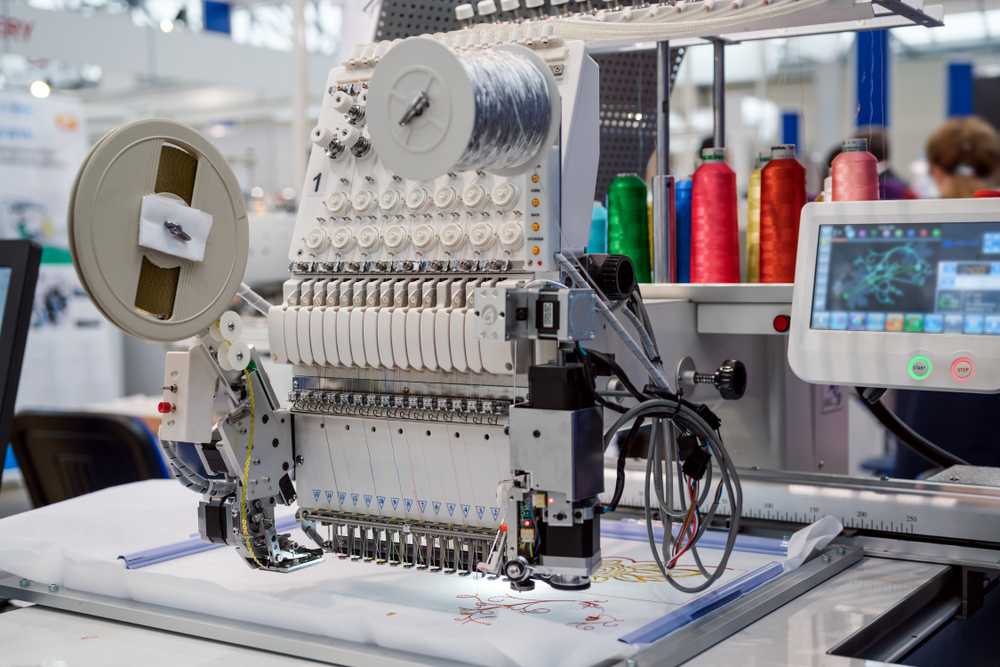Simplifying the Art of Embroidery Digitizing: Step-by-Step Overview
As technology continues to breakthrough, the digitization process has come to be a lot more easily accessible, permitting enthusiasts to bring their intricate layouts to life with convenience. In this guide, we will untangle the intricacies of needlework digitizing, breaking down each action systematically to simplify the procedure and equip both novices and skilled embroiderers alike.
Comprehending Needlework Digitizing Software Program
Embroidery digitizing software application offers as a critical tool for changing intricate styles into digital layouts suitable with embroidery makers, facilitating precise sewing and modification. This specialized software application enables customers to import various image data styles, such as JPG or PNG, and convert them into needlework machine-readable styles like DST, EXP, or PES - Digitizing for Embroidery. By making use of functions like stitch modifying, rug options, and string color choice, digitizing software enables customers to manage every element of the design procedure
Furthermore, progressed needlework digitizing software provides devices for developing complex designs, readjusting stitch density, and integrating elaborate information. Individuals can additionally sneak peek the layout prior to stitching it out, making certain accuracy and decreasing mistakes. Furthermore, several software application programs offer automated attributes that assist improve the digitizing process, conserving effort and time.
Recognizing the abilities of embroidery digitizing software program is important for accomplishing high-grade cause embroidery jobs. By grasping this tool, embroidery enthusiasts and professionals can release their creativity and bring complex designs to life with precision and effectiveness.

Selecting the Right Layout File
After familiarizing on your own with the capabilities of needlework digitizing software program, the next important step in the process is selecting the right style declare your project. Digitizing for Embroidery. When picking a style apply for embroidery digitizing, it's necessary to take into consideration the complexity of the layout, the size of the last item, and the kind of fabric you will be dealing with
For complex layouts with great information, a high-resolution image or vector documents is suggested to guarantee that the needlework equipment can accurately reproduce the style. Furthermore, the size of the last product plays a considerable duty in picking the ideal style data. Bigger designs might call for greater resolution documents to preserve quality and sharpness.
In addition, the kind of fabric you will be embroidering on influences the choice of style file. Various materials might require modifications in the style data to ensure that the stitches are properly straightened and the design appears as planned. By thoroughly picking the ideal design documents based on these elements, you can set yourself up for an effective embroidery digitizing process.
Digitizing Tools and Methods
Using specialized software application and precision strategies, digitizing devices are essential in changing detailed styles right into embroidery-ready files. Needlework digitizing software program, such as Wilcom, Hatch, or Embrilliance, provides the necessary platform to transform art work into stitch data. These programs offer functions like stitch editing and enhancing, Full Report rug options, and lettering tools to make sure the layout equates seamlessly onto material.
Among the vital strategies in digitizing is creating a clear path for the needlework device to follow. This includes digitizing each element of the layout with accuracy, establishing stitch types, thickness, and directions. By utilizing devices like digitizing tablet computers or software-specific plugins, embroiderers can accomplish a high level of precision in their digitized styles.
Furthermore, mastering the art of rug sewing is essential for producing top quality embroidery. Underlay sewing maintains the material and creates a structure for the layout, ensuring that the final product is both visually enticing and durable. By understanding these digitizing tools and strategies, embroiderers can raise their craft and bring complex designs to life with precision and efficiency.
Personalizing Stitch Types and Instructions
The choice of stitch types can dramatically impact the overall appearance and texture of the stitched layout. By strategically incorporating these stitch types, embroiderers can achieve depth and measurement in their designs.
Furthermore, the instructions of stitches plays a critical role in improving the visual appeal of the last needlework. Numerous stitch instructions can include structure, emphasize details Our site components, and produce visual passion. For instance, altering the angle of stitches can simulate movement or natural patterns like hair or feathers. By try out different stitch angles and patterns, embroiderers can bring their layouts to life with remarkable information and complexity. Understanding the art of tailoring stitch kinds and instructions encourages embroiderers to release their creativity and raise the quality of their job.
Testing and Refining Your Digitized Design
To make sure the precision and high quality of your digitized layout, detailed screening and improvement are vital actions in the needlework digitizing process. As soon as you have completed the digitization of your layout, it is vital to test it before waging the actual needlework. Testing allows you to recognize any potential issues such as string breaks, sew thickness problems, or style distortions that might influence the outcome.

After screening, it is necessary to refine your digitized style based on the feedback from the examination sew-out. This might include tweaking sew setups, adjusting densities, or making adjustments to the total design to accomplish the wanted outcome. By iterating via screening and refinement, you can tweak your digitized design to excellence prior to progressing with the real needlework process.
Conclusion
Finally, grasping the art of embroidery digitizing calls for a thorough understanding of the software, choosing the appropriate layout documents, making use of digitizing devices and methods, customizing stitch types and instructions, and testing and improving the digitized layout. By complying with these actions, embroiderers can streamline the digitizing procedure and develop top quality click for info stitched layouts with accuracy and effectiveness.
Comments on “Premier Digitizing for Embroidery: Perfect Stitch Every Single Time”